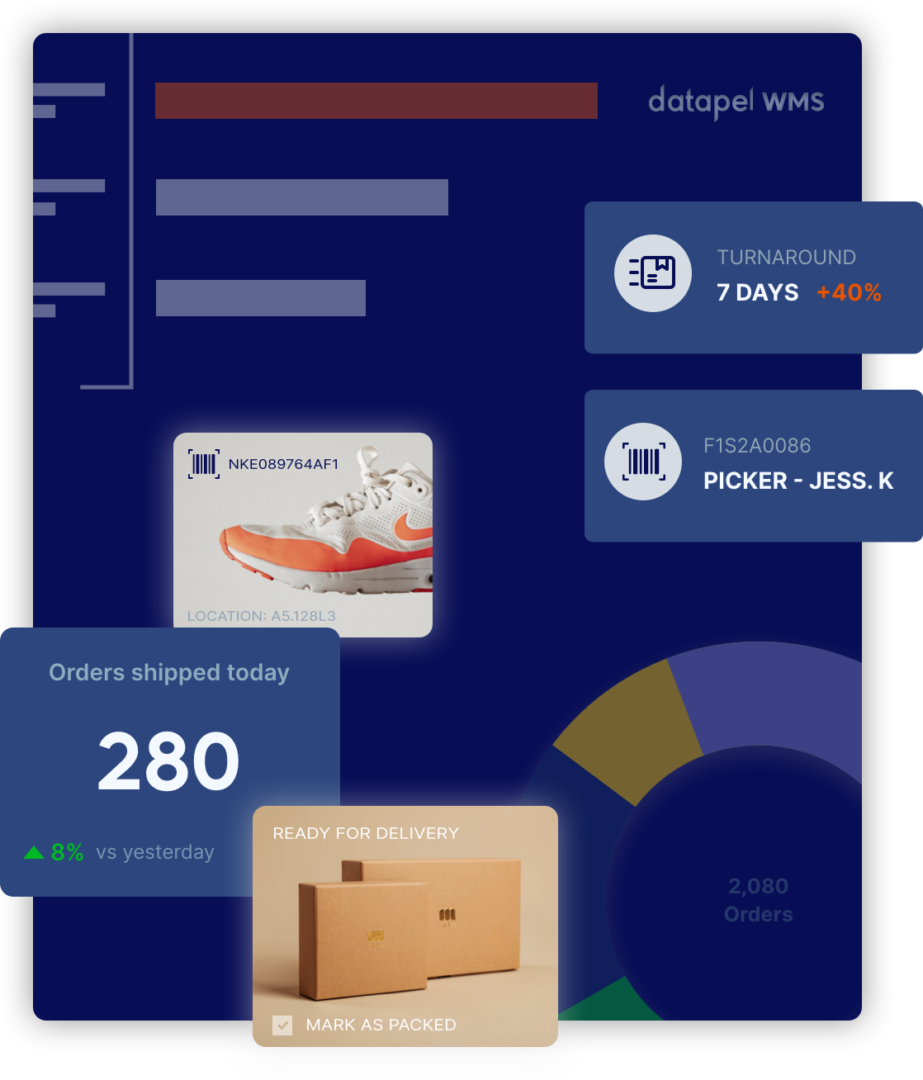10 Tips for Successful Inventory Planning
Inventory Planning is the key to the long-term profitability of any business that sells products, materials or components. But all too often, sales and costs are adversely affected by stock issues.
Whether a business can’t meet demand due to shortages or suffers inflated costs because of wastage, inefficient warehouse management is often the root cause of the problem. The consequences of poor inventory planning can’t be overstated.
At best, it can lead to reduced profitability. At worst, however, it can lead to bankruptcy if the underlying issues aren’t addressed quickly. The best way to address them is an inventory management system that eliminates stock issues, reduces administration and minimises human error.
But there’s something else to consider: falling behind your competitors. According to the Warehousing Vision Study by Zebra Technologies, 61% of respondents agree IT/technology utilisation is their biggest operational challenge now and within the next five years.
To stand still is to go backwards when it comes to inventory planning.
Whether you’re selling raw materials, finished products or components, you need a reliable warehouse management system and a systematic approach to inventory planning.
10 Tips for Successful Inventory Planning
1. Create Priority Groups
Which items do you order most frequently? And which are absolutely essential to fulfilling orders or generally doing business?
Identify those items and place them in priority groups. To get started, create three or four groups in terms of their importance to your operation. And give the high-priority items the most attention.
An inventory planning software package will help you identify and categorise the most important items in your business.
2. Keep Detailed Product Information

The more information you hold on your inventory items, the more prepared you’ll be when you need to react to changing scenarios quickly.
Make sure, as a minimum, you have a record of barcodes, SKUs, suppliers and prices. If you track the overall trend of prices for each item in your inventory, you’ll be able to identify the potential cost-savings of switching to alternative suppliers — and make any switch quickly and seamlessly.
3. Implement the 80/20 Rule
While this tip might be a little crude, it’s a good place to start if you’re struggling to control waste or ensure your stock holdings can meet demand. Put simply, around 80% of a successful business’s profits usually come from around 20% of its stock.
With the help of inventory planning software, identify your top 20% and monitor those items more closely. Identify trends and look for dips and peaks in demand.
Once you understand what is driving demand for those products, you can drastically improve your inventory planning approach — and the overall profitability of your business.
4. Monitor the Performance of Suppliers
Supplier performance is critical to your inventory management success.
Continuously assessing your key suppliers’ performance ensures that they meet your standards and deliver on time. Even minor declines in supplier performance can hurt your business, making it crucial to identify and address these issues promptly.
Additionally, maintaining relationships with alternative suppliers provides a safety net in case you need to switch suppliers due to unforeseen circumstances.
5. Perform Regular Inventory Audits
In line with the nature of your stock, your average stock holdings and the ebb and flow of sales, create an audit schedule that works for your business. Some businesses perform a full audit once a week; others, once a year.
You could, for example, decide to perform an audit on a different item category every week. Or you may decide to audit your entire inventory once a month.
The important issue here is that you create a schedule that works for your business and implement it with the help of warehouse management software.
6. Make Your Inventory Data Easily Accessible

Access to real time inventory data is invaluable for making informed decisions. Whether it’s addressing customer queries or exploring alternative suppliers, having accurate and readily available information is critical.
This accessibility empowers you to identify slow-moving items, high-demand products, and potential issues such as shrinkage or theft that could affect your business’s profitability.
Extra tip: Include detailed information on every item in your inventory, including open orders, lead times, a list of suppliers, SKUs and anything that can help you make informed decisions.
7. Be Ready to Act When Market Fluctuations Occur
If demand and supply for your products stayed the same all year round,
Inventory planning would be a breeze. But every market can be volatile at times. An almost endless list of factors beyond your control has the potential to affect both supply and demand at any time — damage your business’s profitability.
The good news is that the right inventory management system can track and store historical data to predict when changes in demand might occur. It can also give you a heads-up when a fluctuation in supply or demand is beginning. Having time to react to such situations can save your business a lot of money.
8. Take Control of Ordering
While some vendors will offer to process restocks on your behalf, you should treat such offers with caution.
Yes, this might seem like a simple way to protect your business from shortages, cut labour costs and guarantee supplies, but a vendor’s priority will always be to sell you as much as they can.
Your priority, however, should be to hit that sweet spot between having enough stock to keep up with demand and not tying too much cash up in your warehouse.
If you’re concerned about stock shortages, create a bespoke inventory planning system that takes into account the ebb and flow of demand. Better still, let an advanced inventory planning system take charge of restocks for you.
9. Closely Track and Analyse Sales

In-depth analysis of sales data goes beyond routine tracking. It involves examining the finer details to understand the drivers of sales. Factors such as seasonality, complementary product pairs, and patterns affecting demand for priority items should be meticulously studied.
This deeper insight into your sales data enables you to proactively prepare for fluctuations in demand and optimise your inventory accordingly.
10. Utilise an Inventory Planning Tool
A robust inventory planning platform is a comprehensive solution that streamlines various aspects of inventory management. It empowers you to manage ordering efficiently, monitor sales, process deliveries, and enhance overall inventory control, especially in multi-warehouse environments.
Integration with existing CRM and ERP applications ensures seamless coordination across your business processes, resulting in improved efficiency and profitability.
Final Thoughts
In conclusion, effective inventory planning is undeniably crucial for the long-term profitability and success of any business involved in selling products, materials, or components. The repercussions of poor inventory management can range from reduced profitability to, in the worst cases, bankruptcy.
To navigate the challenges and stay competitive in a rapidly evolving market, adopting a systematic approach to inventory planning is essential. The ten tips provided here offer valuable inventory insights into how businesses can enhance their planning practices.
Prioritising items, maintaining detailed product information, applying the 80/20 rule, monitoring supplier performance, conducting regular inventory audits, ensuring data accessibility, and being prepared for market fluctuations are all fundamental strategies to optimise inventory management.
Ttaking control of ordering, closely tracking and analysing sales data, and using advanced inventory planning tools like Datapel’s Warehouse Management System can significantly contribute to efficiency, cost reduction, and increased profitability.
Book a demo with our experts to find out how Datapel can support your business.

In my role, I oversee the development of insightful blogs that delve into the intricacies of warehouse management. Each piece reflects my dedication to empowering businesses through informative content. Through my team’s extensive experience in the industry, we aim to bring clarity to the complexities of WMS, helping businesses make informed decisions.
Join me on a journey through the ever-evolving landscape of warehouse technology as we explore the latest trends, industry insights, and practical tips to streamline your operations. Feel free to connect, and let’s embark on a collaborative exploration of how WMS can redefine your business efficiency.
Cheers to innovation, efficiency, and the exciting world of warehouse management!







